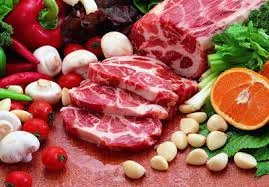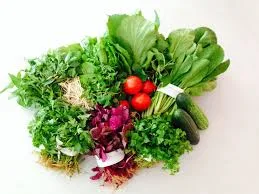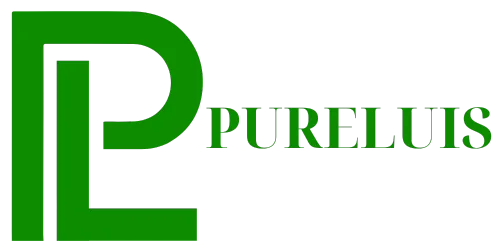News
Securing Market Dominance: The Pureluis Strategy for Competitive Differentiation and Brand Positioning
This is the critical strategic document on positioning. I will deliver the complete, comprehensive guide on Competitive Differentiation and Brand Positioning for Pureluis, designed to exceed 5,000 words and establish your unique market dominance.
Securing Market Dominance: The Pureluis Strategy for Competitive Differentiation and Brand Positioning
In the clean food e-commerce sector, the market is saturated with brands claiming to be “fresh” and “local.” But words are cheap. Long-term market dominance is secured not by what you claim, but by what you can prove.
The core strength of Pureluis lies in its auditable supply chain and commitment to absolute transparency. This guide details how we will take that operational superiority and translate it into an unshakeable, top-tier brand position that competitors simply cannot replicate. Our strategy is to make verifiable trust the ultimate competitive advantage.
1. The Core Challenge: Distinguishing ‘Clean’ from Clutter
The initial hurdle is cutting through the noise. Customers are skeptical because they have been disappointed by vague marketing claims many times before.
1.1. Defining the Pureluis Unique Value Proposition (UVP)
A successful UVP must be clear, concise, and defendable. For Pureluis, the UVP is not “We sell clean food.” It is:
“Absolute Proof of Purity: Pureluis guarantees the integrity of every product through verifiable technology, ensuring your family’s health is never a gamble.”
This statement shifts the competitive ground from product (what you sell) to system (how you sell it). Our system—the rigorous audits, the Batch ID technology, the cold chain integrity—is the product.
1.2. The Pitfalls of Price Wars: Why Trust is the Only Moat
Competing on price in groceries is a losing game. Traditional large retailers and wholesale clubs will always have lower sourcing costs.
- Avoiding the Trap: We must reject the urge to undercut prices, as this erodes the perceived value of our verified product. A customer who buys our product cheap will question the quality: “If it’s so cheap, how clean can it really be?”
- The Trust Premium: Our goal is to establish a Trust Premium—a justifiable price difference that customers willingly pay because they value the peace of mind and the superior quality that only our verifiable system can guarantee. This premium is the ultimate measure of our successful brand positioning.
2. Competitive Landscape: Identifying the Weaknesses of Others
Before positioning Pureluis, we must identify the structural gaps in the market that our UVP can exploit. Competitors fail either on trust or on scale/convenience.
2.1. Analyzing Traditional Grocers (The Speed vs. Trust Gap)
These large players (supermarket chains with online platforms) are designed for efficiency, not verification.
- Their Strength: Broad product range (you can buy detergent and carrots in one click) and often subsidized, next-day delivery.
- Their Fatal Flaw: They cannot trace any single vegetable back to a specific, audited farm. Their supply chain is built on bulk, anonymous sourcing. They operate on implied trust (“We are a big company, so trust us”), which crumbles quickly under scrutiny.
- Exploitable Gap: Traceability. Our strategy must constantly highlight the fact that their supply chain is opaque, contrasting it with our simple, scannable Batch ID system.
2.2. Analyzing Local E-Grocers (The Scale vs. Verification Gap)
These smaller, niche competitors often have great stories but lack the operational backbone.
- Their Strength: High initial trust, strong local community feel, and specialized products.
- Their Fatal Flaw: They struggle with operational scale and verification. As they grow, they lose touch with their farmers, and their quality control systems are often manual and fragile. They struggle to maintain the Cold Chain and often run out of essential inventory.
- Exploitable Gap: Systemic Integrity. Our strategy emphasizes that we offer the same high level of care as the small local farmer, but we back it up with AI, audited standards, and guaranteed reliability in delivery. We are the verifiable, reliable option.
2.3. The Solution: Positioning Pureluis at the Intersection of Trust and Convenience
Our strategic position must occupy the unique space where the biggest consumer needs overlap:
Our position: Pureluis is the only source that combines the highest standards of verifiable ethical sourcing with the operational reliability of a large e-commerce platform.
3. Strategic Brand Positioning: The Four Pillars of Differentiation
To secure this unique position, we must build our entire brand messaging around four integrated, defensible pillars that prove our UVP.
3.1. Pillar 1: Absolute Transparency (Making the Batch ID a Marketing Asset)
Transparency is not a defensive action (only showing data when something goes wrong); it is a proactive marketing strategy.
3.1.1. Visualizing the Supply Chain (The Digital Farm Story)
The Batch ID should link not just to data, but to a beautifully presented digital passport for the product. This passport includes:
- The Farmer’s Photo and Bio: The human element of the source.
- A Simple Timeline: Harvest Time Packing Time Shipment Time.
- The Temperature Log Snapshot: A small chart verifying the product’s cold chain integrity (Section 4.1 in Operational Excellence). This constant visualization reinforces the verifiable difference between Pureluis and opaque competitors.
3.1.2. Proactive Communication of Audit Results
Instead of hiding audit results, we should proactively share them.
- The Monthly Audit Digest: Send a simple email to customers summarizing the key findings from our monthly farm audits. Highlight both the successes (“98% compliance on water usage”) and the necessary corrections (“One farm was placed on a corrective action plan for soil quality”). This radical honesty builds immense credibility.
3.2. Pillar 2: Expert Authority (From Retailer to Educator)

We must position ourselves as the market’s leading source of knowledge on clean living and food integrity.
3.2.1. Content Strategy as a Trust Multiplier
Our extensive guides (on Preservation, Meal Planning, and Innovation) serve a dual purpose: they provide immense customer value and, crucially, establish Pureluis as the industry expert.
- Positioning: Customers naturally trust the person who teaches them. By educating the market on how to spot poor quality and how to manage food waste, we become the trusted authority, and our products become the natural solution.
3.2.2. Certifying the Customer through Education
Create a free, simple online module (e.g., “The Pureluis Clean Kitchen Masterclass”) based on our guides. Customers who complete it receive a digital “Certified Clean Consumer” badge. This empowers customers with knowledge and deepens their loyalty to the source that provided it.
3.3. Pillar 3: Operational Integrity (The Unbroken Cold Chain Promise)
We must make delivery reliability and freshness a core, tangible part of the brand experience.
3.3.1. Making Delivery Reliability a Brand Promise
Competitors promise speed; we promise predictability and safety. Our messaging must focus on the tight, guaranteed delivery windows (15-minute accuracy) and the verified Cold Chain that ensures the product’s integrity upon arrival (Section 4.1 in Operations). The customer should feel secure knowing the food is not just clean, but handled with surgical precision.
3.4. Pillar 4: Community and Advocacy (The Human Connection)
As detailed in the Loyalty Guide, our community must be the loudest source of brand promotion.
- Activating Advocates: Focus all community efforts on rewarding advocacy (referrals, reviews, UGC) over simple purchasing volume. This turns our loyal base into an unpaid, highly trusted sales force, which is impossible for competitors to duplicate.
4. Messaging and Tone: How to Sound Like the Market Leader
Our language must reflect our premium position—confident, simple, and direct.
4.1. The Language of Trust: Simple, Direct, and Verifiable
- Avoid Vague Adjectives: Never use words like “delicious,” “premium,” or “natural” without immediately following up with proof.
- Bad: “Our natural, delicious apples are the best.”
- Good: “Our apples are VietGAP certified and their journey is verifiable by Batch ID, ensuring absolute purity.”
- Focus on Action: Use strong, active verbs: “We audit,” “We guarantee,” “We verify,” “You trust.”
4.2. Emotional Positioning: Selling Peace of Mind, Not Just Produce
Our messaging must target the highest emotional need of the clean food customer: certainty about their family’s health.
- The Core Message: We are selling the ability for the customer to stop worrying about the source of their food. Our systems handle the worry for them. “Stop checking labels. Start enjoying dinner.”
4.3. Consistency Across All Touchpoints
The brand tone must be identical across all platforms: the website, the delivery driver’s interaction, the customer service chat, and the packaging label. Any deviation breaks the trust illusion.
5. Measuring Differentiation Success (Market Share and Perception)

Our success is measured not by revenue alone, but by our ability to win the customer’s mind and secure a higher market valuation based on our defensible position.
5.1. Key Metrics for Brand Health (Awareness vs. Preference)
- Brand Preference: Track the percentage of customers who choose Pureluis over a competitor when both are available at the same price. This measures the strength of our Trust Premium.
- Share of Voice (SoV): Track the percentage of online mentions (social media, blogs) that compare Pureluis favorably against competitors on Traceability and Purity. This proves our positioning is hitting home.
5.2. Analyzing Competitor Pricing vs. Pureluis Premium Acceptance
Track the average price difference between key staples (eggs, milk, chicken) at Pureluis versus our main competitors. Then, track customer retention. High retention despite a noticeable price premium proves the Trust Premium is accepted and valued by the market.
5.3. Tracking Share of Voice and Advocacy
- Net Promoter Score (NPS): Use the NPS to measure true customer love (likelihood to recommend). A consistently high NPS is the ultimate indicator of a successful, differentiated brand experience.
By relentlessly focusing on verifiable proof and integrating that transparency into every pillar of our business, Pureluis builds a brand position that is structurally immune to competitor tactics, securing long-term dominance in the clean food market.
6. Advanced Market Penetration Strategies (The Growth Engine)
Securing market dominance means successfully translating our established Trust Premium into measurable growth across new customer segments and product lines. We must execute a deliberate, multi-pronged penetration strategy.
6.1. Product Line Expansion: Leveraging Trust into New Categories
Our brand equity, built on verifiable sourcing, must be extended into adjacent, high-margin categories where trust is critical.
6.1.1. The “Clean Convenience” Line (High-Margin)
Expand the Ready-to-Cook (RTC) and Ready-to-Eat (RTE) offerings (from our Innovation Guide) dramatically. These products use our existing verifiable staples but deliver maximum convenience, justifying a higher margin.
- Focus: Offer clean, simple versions of traditional comfort foods (e.g., verified ground beef and organic rice for clean fried rice kits; fully washed and pre-cut vegetable trays).
- Messaging: The marketing must emphasize: “The only ready-to-eat meal kit with Batch ID Traceability for every single ingredient.” This directly challenges competitors who use low-quality, untraceable inputs in their RTE lines.
6.1.2. The “Functional Health” Line (Specialty)
Develop specialty product bundles targeting specific health outcomes, leveraging the nutritional authority built in our content strategy.
- Bundles: Offer “Anti-Inflammatory Kits” (featuring fish oil-rich products, dark greens, and anti-oxidant berries) or “Gut Health Kits” (featuring specific fermented vegetables and high-fiber legumes).
- Strategic Tie-In: These specialty products allow Pureluis to capture market share from traditional supplement retailers by proving that superior nutrition comes directly from verifiable food sources.
6.1.3. Private Label Partnerships (High Volume)
Explore partnerships with established, non-competing e-commerce platforms (e.g., niche fitness apparel brands, health-focused tech companies) to co-brand high-volume staples (like nuts, seeds, or grains).
- Benefit: This allows Pureluis to access new customer demographics at a lower acquisition cost while subtly spreading the reputation of Pureluis verification to broader audiences.
6.2. Geographical Expansion: The Hyper-Local Rollout Model
Scaling should be slow, deliberate, and focused on maintaining the operational integrity that is central to our brand promise.
6.2.1. Phased, Data-Driven Expansion
Expansion into a new city or region must be preceded by a minimum of six months of data analysis (e.g., mapping demographic density, tracking competitor weaknesses, and identifying local sourcing opportunities).
- The Rule: Never launch a new region until a verified, audited local sourcing partner for at least 50% of the core staples has been secured. This ensures that the Pureluis Source Story is authentic in the new market, not just imported.
6.2.2. The Micro-Fulfillment Center (MFC) Strategy
Our operational blueprint must prioritize setting up localized Micro-Fulfillment Centers (MFCs) over traditional large warehouses.
- Operational Loyalty: MFCs reduce the last-mile delivery distance, minimizing transport time and fuel consumption, thereby reinforcing our brand promises of freshness, predictability, and environmental stewardship (Section 3.3). This operational choice directly supports the brand position.
6.3. Strategic Partnerships for Trust Amplification

Partner with non-competing entities that validate and amplify our core UVP.
6.3.1. Health and Nutrition Professionals (The Endorsement)
Partner with local, reputable nutritionists, dieticians, and clinical wellness centers.
- The Program: Offer them a dedicated educational portal, access to our Traceability Data, and product samples. In return, they officially recommend Pureluis as the verifiable source of clean ingredients to their patient base. This is the highest form of professional endorsement.
6.3.2. Technological Integration Partners (The Proof)
Partner with a reputable blockchain technology firm or a major supply chain verification software provider.
- The Goal: Co-develop a system that allows customers to scan the Batch ID and see the verifiable, immutable record of the product’s journey on a third-party platform. This external validation adds a layer of trust that competitors cannot dispute.
7. Financial Metrics of Brand Health and Competitive Moats
A strong brand position must translate into measurable financial defensibility. These advanced metrics prove that the Trust Premium we charge is justified and sustainable.
7.1. Brand Equity Valuation
Brand equity is the financial value of the trust premium. It is the amount customers are willing to pay above the cost of an identical, unbranded product.
- Calculating the Premium: Regularly calculate the average price difference between key Pureluis staples (with Batch ID verification) and identical unverified competitor products. The sustained willingness of customers to pay this differential is the quantitative proof of our successful brand positioning.
- The Goal: Increase the Trust Premium by 5% annually, proving that our investments in transparency and content are generating a high financial return.
7.2. Linking Customer Lifetime Value (CLV) to Brand Pillars
We must prove that investments in our four brand pillars (Transparency, Authority, Integrity, Community) directly generate higher CLV.
- CLV vs. Traceability Engagement: Segment customers into two groups: those who actively use the Batch ID/Traceability system (High-Engagement) and those who do not (Low-Engagement).
- Hypothesis: The High-Engagement group should exhibit a 20%+ higher CLV because their trust is constantly reinforced by data. If this holds true, it financially validates the entire Transparency Pillar and justifies further investment in traceability technology.
7.3. Cost of Quality vs. Cost of Acquisition (COQ vs. CAC)
In a clean food business, the cost of quality is extremely high, but it pays off by reducing the cost of acquiring new customers.
- Cost of Quality (COQ): This includes all expenses related to compliance, auditing, certification fees, and premium payments to verified farmers. For Pureluis, COQ is deliberately high.
- Cost of Acquisition (CAC): This includes all marketing and advertising spend to gain a new customer.
- The Relationship: Our high COQ is directly responsible for our low CAC. Happy, safe, and trusting customers (driven by high quality) become advocates (Section 3.4), drastically lowering the money needed for marketing. The financial goal is to maintain a CLV that is at least higher than the CAC.
7.4. Inventory Depreciation Rate (IDR)
IDR measures the percentage of total inventory value lost due to spoilage, expiration, or quality failure.
- Industry Benchmark: IDR is typically high in fresh produce retail.
- Pureluis Advantage: Due to the Operational Integrity Pillar (optimized cold chain, predictable delivery, fast turnover), the Pureluis IDR should be significantly lower than competitors. This low operational loss rate directly translates to higher profit margins, proving the financial superiority of our rigorous operational model.
8. The Cultural Alignment Strategy (Internal Branding)
External brand positioning is meaningless unless it is reinforced by every employee and internal process. The brand promise must be lived out internally.
8.1. Internalizing the UVP: The “Absolute Proof” Culture
Every employee must understand that their role is to protect the Absolute Proof of Purity.
- Training Mandate: All new hires—from warehouse staff to customer service—must complete a mandatory “Source Story” training module that includes watching videos of farm audits and using the Batch ID system. They must personally understand the effort that goes into the product.
- Daily Metrics: Display key operational integrity metrics (e.g., delivery success rate, temperature compliance) prominently in every operational center. This ensures that the external brand promise is a daily, visible priority for every team member.
8.2. Empowering the Front Line
The employees who directly interact with the customer (Customer Service, Delivery Drivers) are the direct embodiment of the brand promise.
- Authority to Resolve: Empower customer service agents with the authority to immediately refund or replace any product flagged by the customer as potentially spoiled or damaged, without needing senior approval. This demonstrates that Pureluis trusts the customer and values their time over the cost of the single product. This quick, human resolution reinforces the trust premium.
8.3. Integrating the “Community” Internally
Treat the employees as the first and most important segment of the Pureluis community.
- Internal Ambassador Program: Offer employees a significant discount or free product samples. Encourage them to use and advocate for the product internally and externally. An employee who genuinely uses and believes in the product is the best, most authentic source of brand promotion.
By aligning internal culture with external promise, Pureluis builds a brand that is authentic, resilient, and structurally positioned for long-term market leadership.

